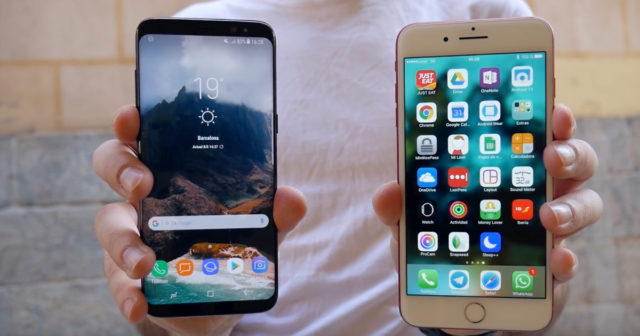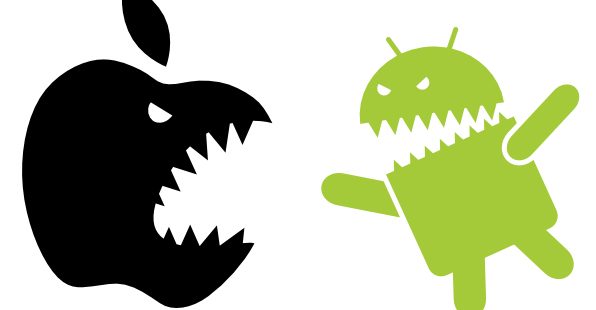Month: April 2020
Android And iOS Compared
ANDROID vs iOS
The two most widely used Mobile OS worldwide right now are Android and iOS. Android has been released by Google, and is the OS inside 2.5 Billion active devices like smart phones, tablets, wearables and so on. It is easily the most popular mobile OS in the world. But firmly in the Second Place, is the iOS, launched by the Apple Group. Other mobile OS, like a resurgent Windows OS, from Microsoft, are still quite far behind. While both perform similar duties, there are stark differences between the two, not just in principles, but also in functionality. This is what makes this short study of Android and iOS compared so interesting for all Readers.
Comparing The Two
Here is a Checklist of Android and iOS compared:
- Source: iOS and Android has completely opposite approaches to Source. While iOS is completely proprietary source, meaning fully owned and controlled by Apple Group, Android was released by Google as an Open Source mobile OS. All or any Developers are welcome to create versions and Apps from the basic Linux kernel, and has moved ahead to the touch-screen based Smart Phone era from the original black and white mobile phones which were meant for communication only. Both the OS together have converted the modern Smart Phone to a multi-purpose mini-computer that offers unbelievable features. But it is Android that, by its Open Source configuration, has become by far the most popular for both Users and Developers.
- Compatibility: While Apple is gradually opening up the iOS ecosystem to include third party devices, Google has already been there and done that, as they say. From the beginning, Google’s approach meant that the ecosystem of Android has been open to the vast variety of devices now looking for a suitable OS to fall back upon, now that all the older OS are becoming extinct (with perhaps the exception of Windows, which now seems to be on the return path again). Simply expressed, using Apple iOS forces the User to limit the choice of peripherals as well as the central Smart Phone to only a few brands. Whereas, if for example, a User favors a Huawei Smart Phone, and desires a Google Home Speaker system, with a Samsung Smart watch, all devices are fully compatible as they all use Android OS. This allows the Users a wide ecosystem, where they need not get locked into just a few brands only, and be fully flexible with their selections.
- Quality: This is one area where the iOS has a clear advantage over Android. Apple is renowned for its innovation and quality. The fact that all its products are housed under the same roof means strict quality control. The magical leadership of Steve Jobs and his acolytes has meant continuous and sometimes startling development. In fact, it was Apple which first came up with the Touch screen, which is the heart of all the Smart devices now. But Android has variable Quality, spread across the vast numbers of device manufacturers and App developers. It is not for nothing that Apple calls itself the “Rolls Royce of Mobile Smart Phones”. It’s the sheer Quality of even its lowest priced product. This also attracts many cool and innovative mobile app developers to focus and launch on ios first. Such is the case with the popular free sex app Fuckbook which shares here why they felt launching their hookup app on iOS first was ideal for their target demographic of casual sex seekers.
- Price Range: A major reason for the greater popularity of Android OS based phones is the huge Price Range of its varied products. While Samsung’s flagship smart phone Galaxy is on par with the latest Apple 11 on Quality (some Users say it is better), and costs even more, there are Android smart phones that are perfectly feature-rich and with decent quality even at the US$100 range! Xiaomi is a Chinese phone that combines top level features with some of the lowest prices in the market to offer a lethal product that is fast growing in popularity. The cheapest Apple iOS smart phone is generally too costly for the mid-range and budget Buyer. According to the latest figures, iOS has a market share of 57% of the mobile market in the US (as on February 2019). But in the budget-conscious countries like China, India and Africa, iOS loses its home –ground advantage of Quality First very quickly. In China, iOS devices have a market share of just 28%, while in Africa it is 15% only, and in India it is a staggering low of 2.8%! We must not forget that China and India together account for more than a third of the entire world’s population, and then the disadvantage of iOS becomes clear.
- Advanced Features: There was a time when it was Apple that launched all the latest inventions, and stood higher than all its competitors put together. But this is fast changing. Intense research and development has resulted in Android-based competitors catching up, especially in the fields of AI.

In spite of the present position, however, if the past is any indication, the future is totally open to conjecture.



